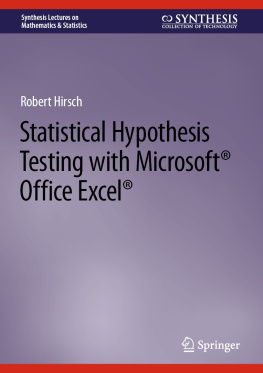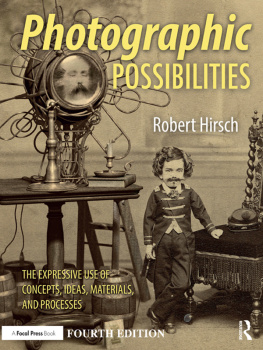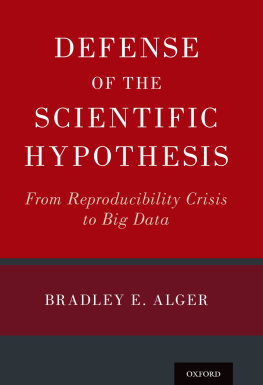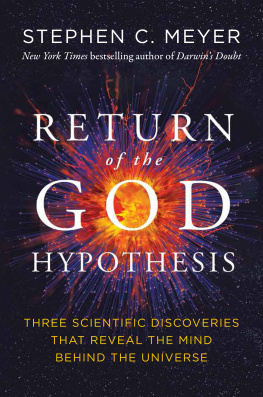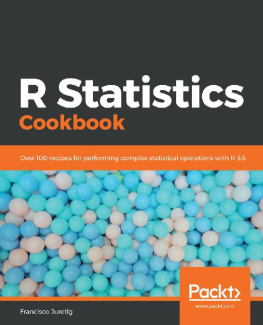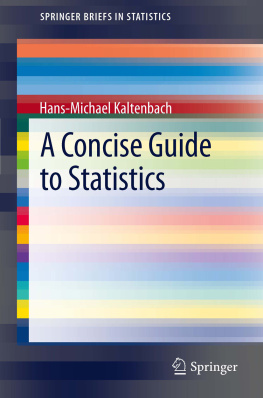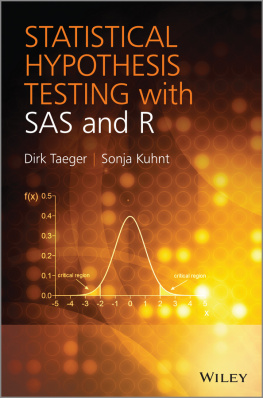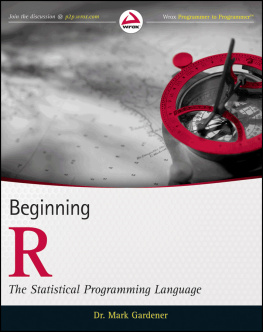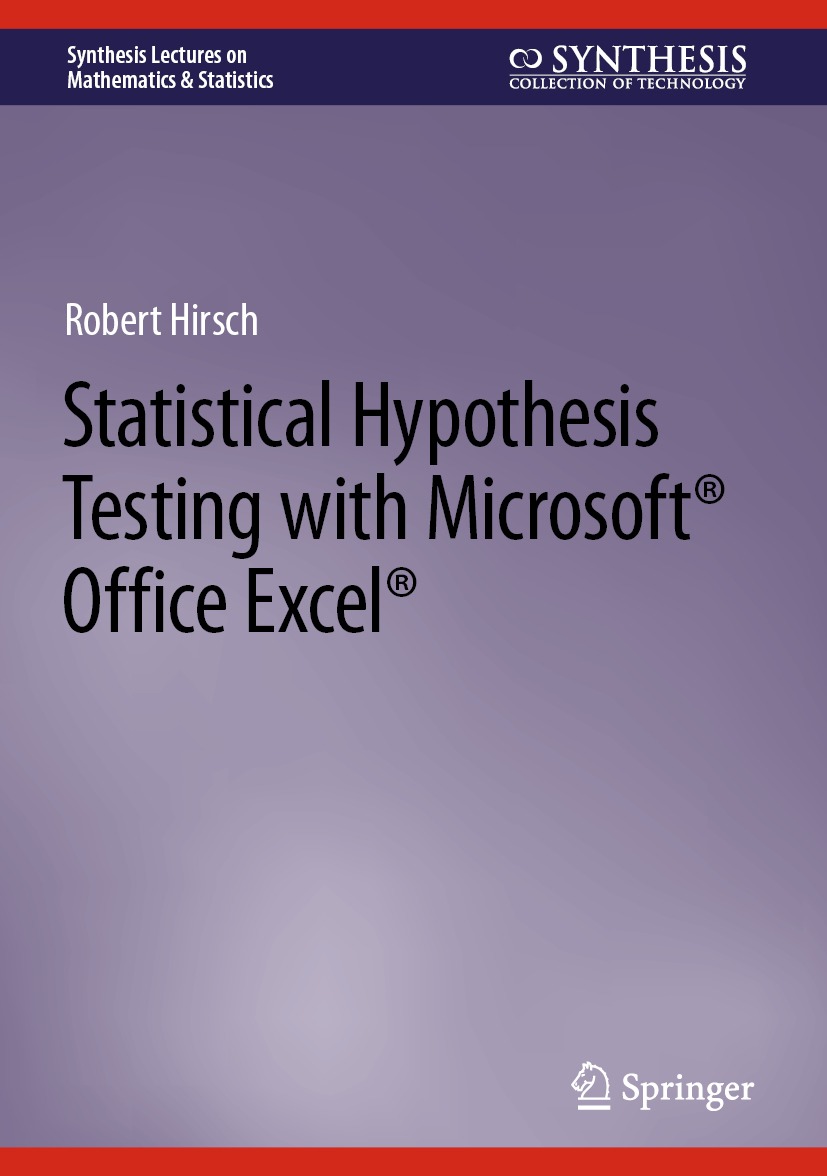Synthesis Lectures on Mathematics & Statistics
Series Editor
Steven G. Krantz
Department of Mathematics, Washington University, Saint Louis, MO, USA
This series includes titles in applied mathematics and statistics for cross-disciplinary STEM professionals, educators, researchers, and students. The series focuses on new and traditional techniques to develop mathematical knowledge and skills, an understanding of core mathematical reasoning, and the ability to utilize data in specific applications.
Robert Hirsch
Statistical Hypothesis Testing with Microsoft Office Excel

The Springer logo.
Robert Hirsch
Overland Park, KS, USA
ISSN 1938-1743 e-ISSN 1938-1751
Synthesis Lectures on Mathematics & Statistics
ISBN 978-3-031-04201-0 e-ISBN 978-3-031-04202-7
https://doi.org/10.1007/978-3-031-04202-7
The Editor(s) (if applicable) and The Author(s), under exclusive license to Springer Nature Switzerland AG 2022
This work is subject to copyright. All rights are solely and exclusively licensed by the Publisher, whether the whole or part of the material is concerned, specifically the rights of translation, reprinting, reuse of illustrations, recitation, broadcasting, reproduction on microfilms or in any other physical way, and transmission or information storage and retrieval, electronic adaptation, computer software, or by similar or dissimilar methodology now known or hereafter developed.
The use of general descriptive names, registered names, trademarks, service marks, etc. in this publication does not imply, even in the absence of a specific statement, that such names are exempt from the relevant protective laws and regulations and therefore free for general use.
The publisher, the authors, and the editors are safe to assume that the advice and information in this book are believed to be true and accurate at the date of publication. Neither the publisher nor the authors or the editors give a warranty, expressed or implied, with respect to the material contained herein or for any errors or omissions that may have been made. The publisher remains neutral with regard to jurisdictional claims in published maps and institutional affiliations.
This Springer imprint is published by the registered company Springer Nature Switzerland AG
The registered company address is: Gewerbestrasse 11, 6330 Cham, Switzerland
Preface
If you need to interpret the results of statistical tests, want to be able to analyze your own data, or plan a study without having to consult with a statistician, this text is for you. It is written for the researcher who does not want to take a statistics course but needs to understand what the statistician does. It is largely nonmathematical except where absolutely necessary. It does not assume the reader knows much about statistics except what a mean and proportion are. To get the most out of the text, you should have access to Microsoft Office Excel but you need not be an expert on its use.
In Chap. you will learn what a P-value is, where it comes from, and how to interpret its value. You will also learn about the type of errors that can be made when drawing conclusions based on the P-value. You will become familiar with two approaches: testing hypotheses and their advantages and disadvantages. You will learn how to use these approaches to interpret a collection of several statistical tests in the same study.
Chapter explains how samples can be taken from the population in a way that creates an unbiased and analyzable dataset. The steps in the sampling process are examined. Then, the methods of drawing the sample are explained with their advantages and disadvantages.
In Chap. you will learn how to choose a statistical test that is appropriate for a given set of data. Then, you will learn about the most common statistical tests, how to use Excel to perform them, and how to interpret the results by using them.
Chapter discusses what you can do if you dont want to wait until a study gets to its planned end before you start looking at the data and draw conclusions about what will happen if the study is allowed to go to completion. It discusses two approaches, both of which can be used to decide to stop a study early if the results look promising. One can also stop a study early if the results do not look promising.
Chapter tells you how to determine the size of a planned sample that allows it to be big enough to see important relationships without being bigger than required. Methods are given for nominal and continuous variables and for datasets with and without independent variables.
Acknowledgments
I appreciate my clients who have shared their frustration in trying to understand statistical hypothesis testing and their desire to be able to perform some statistical procedures without having to involve a statistician.
Robert Hirsch
Overland Park, KS, USA
Notices
The examples in this book are based on fictitious data and should not be taken as a reflection of real relationships. Those data have been created only to illustrate statistical principles.
Contents
The Author(s), under exclusive license to Springer Nature Switzerland AG 2022
R. Hirsch Statistical Hypothesis Testing with Microsoft Office Excel Synthesis Lectures on Mathematics & Statistics https://doi.org/10.1007/978-3-031-04202-7_1
1. Logic of Hypothesis Testing
Robert Hirsch
(1)
Overland Park, KS, USA
Abstract
This chapter begins by describing the hypothesis statistics is designed to test. That hypothesis, known as the null hypothesis, states that things do not differ or there is no association between measurements. If that hypothesis is rejected, we conclude that there are differences or associations. Decisions to reject the null hypothesis are based on P-values. The chapter describes the origin and interpretation of P-values. It also discusses errors that can occur in interpretation of the P-value and how to control them. This discussion addresses the classical or frequentist approach to hypothesis testing. The Bayesian approach takes things further, allowing determination of the probability that the null hypothesis is false given frequentist methods have resulted in rejection of the null hypothesis. Both approaches are applied to the situation in which a study includes several hypothesis tests.
1.1 Classical (Frequentist) Approach
The classical or frequentist approach to hypothesis is the one used most often and is taught in most introductory statistics texts. We will begin by understanding the logic behind this approach to statistical hypothesis testing.
1.1.1 Statistical Hypotheses and Conclusions
Suppose researchers are comparing a new antiviral treatment to the standard treatment as to how well they keep infected persons from hospitalization. Those researchers hypothesize that the new treatment is better than the standard treatment and they want a statistical analysis of their data to support that hypothesis. The way statistics can do that is by eliminating chance as a likely reason for an observed difference between the two treatments. To do that, statistics calculates the probability of observing the observed difference if a hypothesis about the difference is true. Unfortunately, this probability cannot be calculated using the researchers hypothesis. To calculate the probability, the hypothesis must make a specific statement about the difference between the treatments. The researchers hypothesis just states that the new treatment is better but does not specify how much better. To make a specific statement about the difference between the treatments, statistics uses a hypothesis that the researchers believe is not true. That hypothesis is that there is no difference between the treatments. That is a specific statement that the difference is equal to zero in the population. This statistical hypothesis is still useful to the researchers, because if it can be eliminated as a likely explanation for the observed difference, they can, through the process of elimination, conclude that there is a difference not due to chance.

